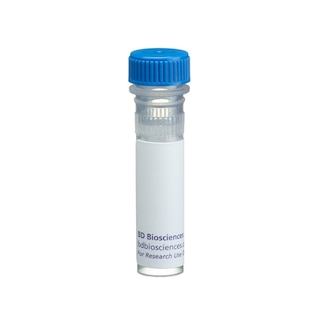-
Reagents
- Flow Cytometry Reagents
-
Western Blotting and Molecular Reagents
- Immunoassay Reagents
-
Single-Cell Multiomics Reagents
- BD® OMICS-Guard Sample Preservation Buffer
- BD® AbSeq Assay
- BD® OMICS-One Immune Profiler Protein Panel
- BD® Single-Cell Multiplexing Kit
- BD Rhapsody™ ATAC-Seq Assays
- BD Rhapsody™ Whole Transcriptome Analysis (WTA) Amplification Kit
- BD Rhapsody™ TCR/BCR Next Multiomic Assays
- BD Rhapsody™ Targeted mRNA Kits
- BD Rhapsody™ Accessory Kits
-
Functional Assays
-
Microscopy and Imaging Reagents
-
Cell Preparation and Separation Reagents
-
- BD® OMICS-Guard Sample Preservation Buffer
- BD® AbSeq Assay
- BD® OMICS-One Immune Profiler Protein Panel
- BD® Single-Cell Multiplexing Kit
- BD Rhapsody™ ATAC-Seq Assays
- BD Rhapsody™ Whole Transcriptome Analysis (WTA) Amplification Kit
- BD Rhapsody™ TCR/BCR Next Multiomic Assays
- BD Rhapsody™ Targeted mRNA Kits
- BD Rhapsody™ Accessory Kits
- United States (English)
-
Change country/language
Old Browser
This page has been recently translated and is available in French now.
Looks like you're visiting us from {countryName}.
Would you like to stay on the current country site or be switched to your country?




Upregulation of H2-M3 expression by exogenous N-formylated peptide. C57BL/6 splenocytes were cultured overnight in the absence (left panel) or presence (right panel) of N-Formyl-Met-Leu-Phe-Phe peptide (Sigma-Aldrich). The cells were then stained with either purified hamster anti- mouse H2-M3 mAb (clone 130) (open histograms) or purified hamster IgG1, κ isotype control mAb (clone A19-3) (Cat. No. 553969, filled histograms), in the presence of Mouse BD Fc Block™ purified anti-mouse CD16/CD32, mAb (clone 2.4G2) (Cat. No. 553141, open and filled histograms), followed by PE mouse anti-hamster IgG cocktail (Cat. No. 554056, open and filled histograms). Flow cytometry was performed on a BD FACSCalibur™ instrument.


BD Pharmingen™ Purified Hamster Anti-Mouse H2-M3

Regulatory Status Legend
Any use of products other than the permitted use without the express written authorization of Becton, Dickinson and Company is strictly prohibited.
Preparation And Storage
Product Notices
- Since applications vary, each investigator should titrate the reagent to obtain optimal results.
- Please refer to www.bdbiosciences.com/us/s/resources for technical protocols.
- Although hamster immunoglobulin isotypes have not been well defined, BD Biosciences Pharmingen has grouped Armenian and Syrian hamster IgG monoclonal antibodies according to their reactivity with a panel of mouse anti-hamster IgG mAbs. A table of the hamster IgG groups, Reactivity of Mouse Anti-Hamster Ig mAbs, may be viewed at http://www.bdbiosciences.com/documents/hamster_chart_11x17.pdf.
- Caution: Sodium azide yields highly toxic hydrazoic acid under acidic conditions. Dilute azide compounds in running water before discarding to avoid accumulation of potentially explosive deposits in plumbing.
Companion Products



The hamster anti-mouse H2-M3 antibody (clone 130) reacts with the H2-M3 major histocompatibility complex (MHC) non-classical class Ib antigen. H2-M3 (M3) associates with β2-microglobulin and is capable of being expressed by most leukocytes. However, due to a lack of endogenous antigens, M3 has been reported to be undetectable on most cells. Its expression is induced by high-affinity N-formylated peptides from mitochondria, Listeria monocytogenes, and Mycobacterium tuberculosis. The induced expression of M3 is most efficient on antigen presenting cells. M3 presents antigen to cytotoxic T lymphocytes and may play a key role in protective immunity against the intracellular bacteria L. monocytogenes and M. tuberculosis. Furthermore, M3 is capable of presenting mitochondrial antigens for intrathymic positive selection of T-cell receptors which recognize those peptides.
Development References (6)
-
Berg RE, Princiotta MF, Irion S, Moticka JA, Dahl KR, Staerz UD. Positive selection of an H2-M3 restricted T cell receptor. Immunity. 1999; 11(1):33-43. (Biology). View Reference
-
Chiu NM, Chun T, Fay M, Mandal M, Wang CR. The majority of H2-M3 is retained intracellularly in a peptide-receptive state and traffics to the cell surface in the presence of N-formylated peptides. J Exp Med. 1999; 190(3):423-434. (Immunogen: Immunoprecipitation). View Reference
-
Chun T, Serbina NV, Nolt D, et al. Induction of M3-restricted cytotoxic T lymphocyte responses by N-formylated peptides derived from Mycobacterium tuberculosis. J Exp Med. 2001; 193(10):1213-1220. (Biology). View Reference
-
Lindahl KF, Byers DE, Dabhi VM, et al. H2-M3, a full-service class Ib histocompatibility antigen. Annu Rev Immunol. 1997; 15:851-879. (Biology). View Reference
-
Seaman MS, Perarnau B, Lindahl KF, Lemonnier FA, Forman J. Response to Listeria monocytogenes in mice lacking MHC class Ia molecules. J Immunol. 1999; 162(9):5429-5436. (Biology). View Reference
-
Shawar SM, Vyas JM, Rodgers JR, Rich RR. Antigen presentation by major histocompatibility complex class I-B molecules. Annu Rev Immunol. 1994; 12:839-880. (Biology). View Reference
Please refer to Support Documents for Quality Certificates
Global - Refer to manufacturer's instructions for use and related User Manuals and Technical data sheets before using this products as described
Comparisons, where applicable, are made against older BD Technology, manual methods or are general performance claims. Comparisons are not made against non-BD technologies, unless otherwise noted.
For Research Use Only. Not for use in diagnostic or therapeutic procedures.